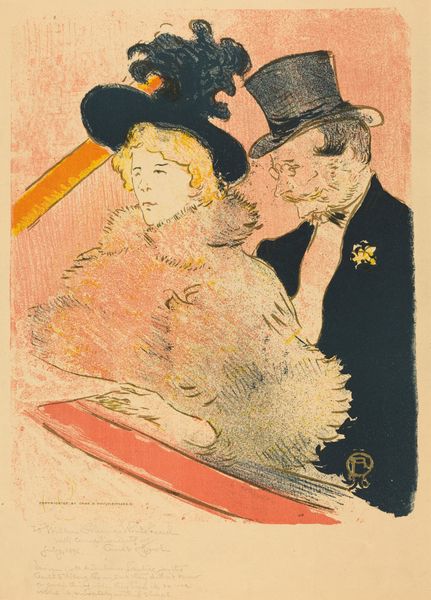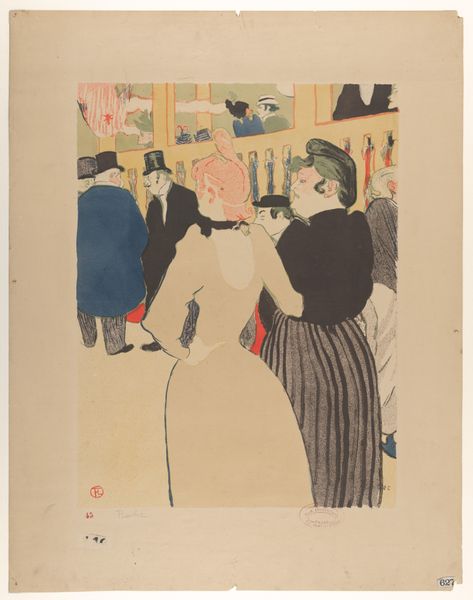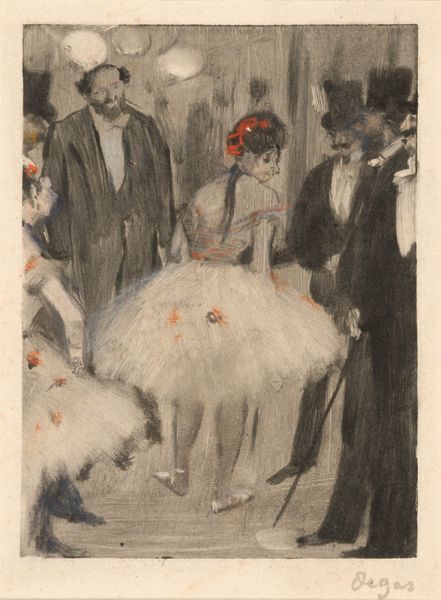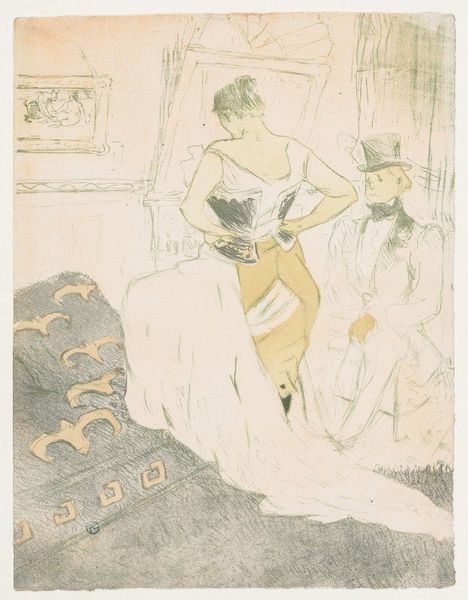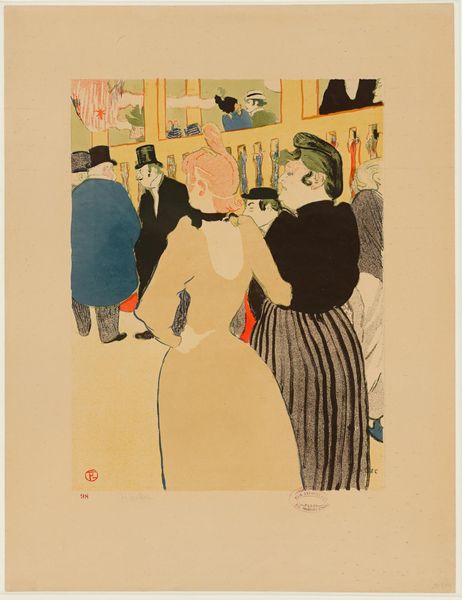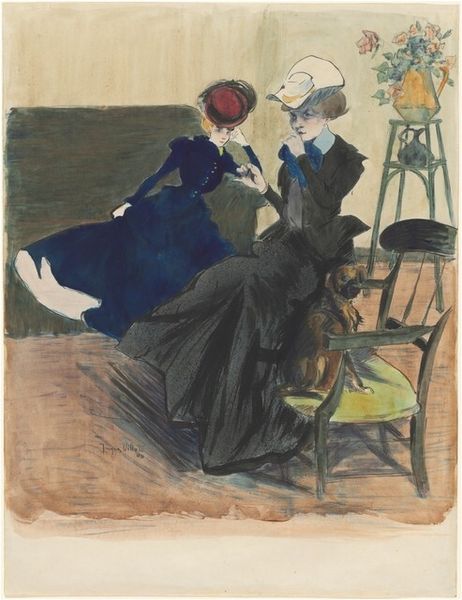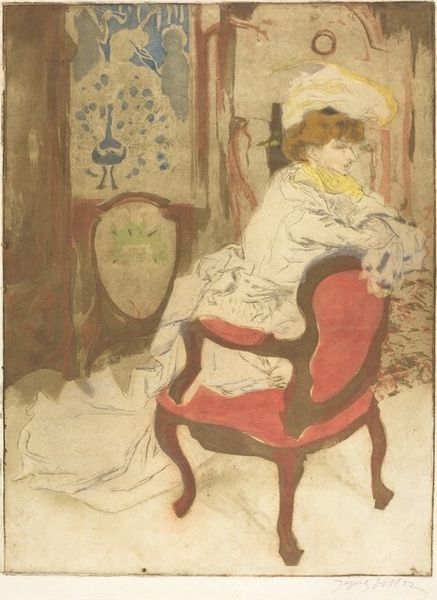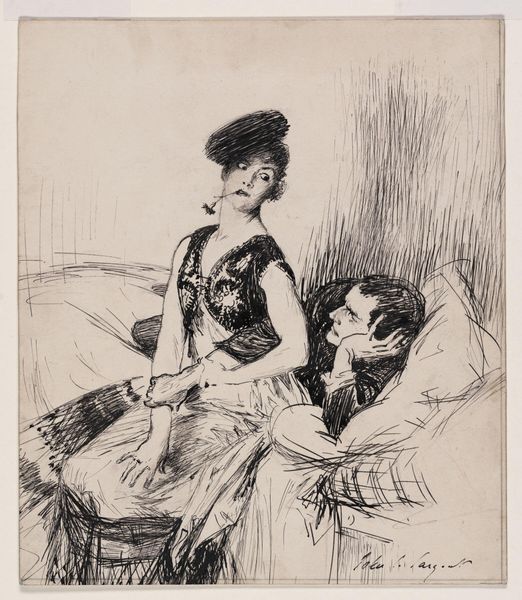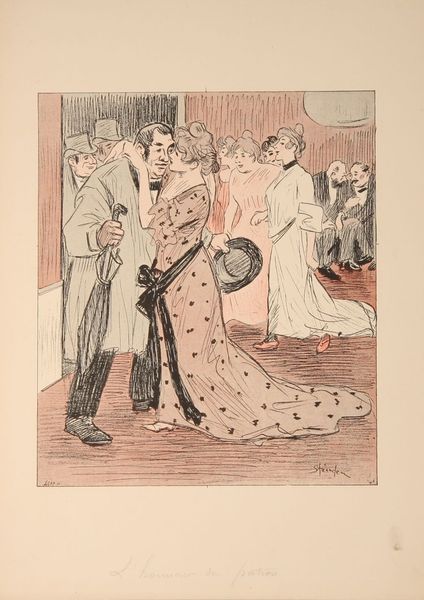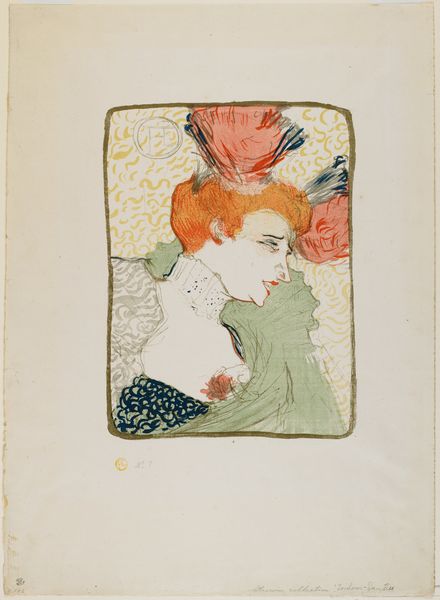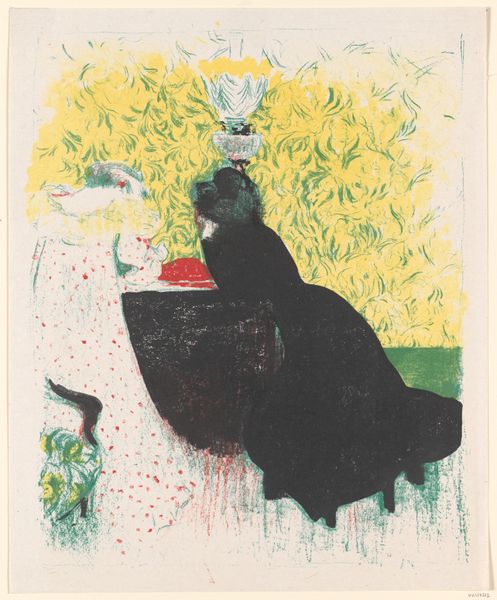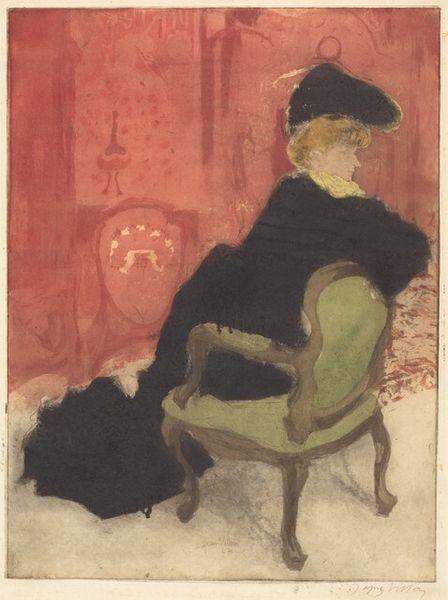
Copyright: National Gallery of Art: CC0 1.0
Editor: This is Henri de Toulouse-Lautrec's "At the Concert," a lithograph from 1896. There’s this quiet tension; the figures seem both present and distant, observed. How do you interpret this work? Curator: Lautrec masterfully captures a slice of Parisian life, doesn't he? But it's more than just a snapshot. Consider the social dynamics at play. What does it mean to depict this couple within the specific context of Parisian nightlife? Think about class, gender, and the gaze. Editor: Well, the woman appears almost like a spectacle herself, adorned with finery. Is Lautrec critiquing that performative aspect of the upper class? Curator: Precisely! His works frequently reveal the artifice of the bourgeoisie. It invites us to dissect the societal norms that dictate such displays. And who is afforded the luxury of leisure, of attending such events, and at what cost? Note, too, the detached expressions - the boredom, perhaps, beneath the surface of glamour. What’s visible and what's hidden here, not only visually but also socially? Editor: It’s interesting to think about the unspoken power dynamics within their relationship and also the societal pressures they must've faced. Curator: Indeed. This piece allows us to engage with a critical dialogue about representation, class, and the construction of identity in fin-de-siècle Paris. The bright stage lights illuminate not only their faces, but also reveal their roles in a complex social drama. What will this work teach us about how privilege has played out in the world over the decades? Editor: I didn’t expect a simple image of a couple at a concert to contain such rich layers of societal commentary! Thanks for showing me the broader view.
Comments
No comments
Be the first to comment and join the conversation on the ultimate creative platform.
